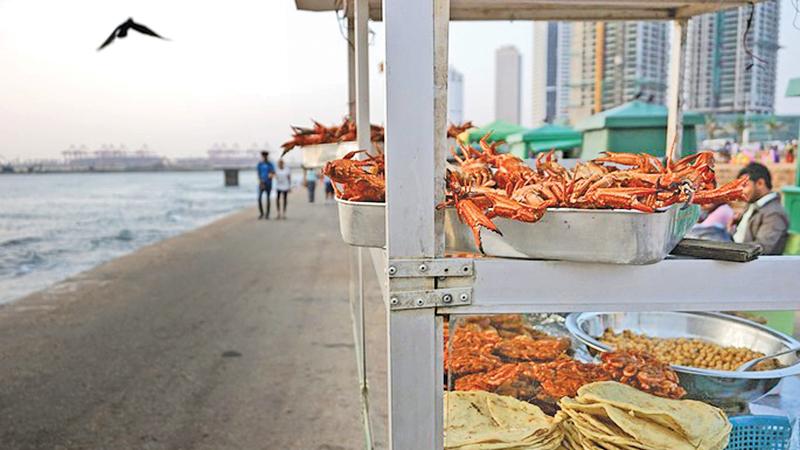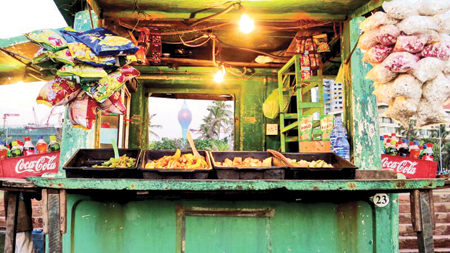
Street food culture can be described as a beautiful cultural phenomenon not only in the West but also in Asian countries, including China, India, and Thailand. In those cultures, people who work hard all day get together in the evenings and have fun while eating street foods and chatting.
People in China have dinner around 5 pm, after which everyone in the house often goes to get street food. After having their food, they walk along the streets. It is a good activity for digestion and maintaining good health. In countries like India, people come to the streets in the evenings to eat something, drink something, and have fun. It is an opportunity to maintain a good connection between them and to work on human relationships.
Various countries
 At present, a new wave is emerging in Sri Lanka. Sri Lankans are all set to emulate the new trends in various countries. Today, street foods have become a popular trend. Street food is the latest trend in the ever-evolving Colombo Night Art.
At present, a new wave is emerging in Sri Lanka. Sri Lankans are all set to emulate the new trends in various countries. Today, street foods have become a popular trend. Street food is the latest trend in the ever-evolving Colombo Night Art.
Street foods are not that popular in Sri Lanka. When compared to street food art in India and Thailand cultures, ours is still limited to a few places and is still active in small quantities.
As we can see, even in a remote city in Thailand, there are delicious street foods that are available at night. Street foods on Abdul Hameed Street in Aluthkade, Sri Lanka, are gaining popularity these days.
Although it has been around for a while, it is only recently that it has become popular through social media. Street food has taken off over the past 10 years, especially in the west, and is now becoming part of the food culture. It is also taking root in the Sri Lankan food pattern.
The Covid-19 pandemic can be considered as one of the reasons for the emergence of this new food art in Sri Lanka.
New art
The reason for this is the loss of many jobs. Many people started this new art of food as a new form of self-employment due to the inability of people who came back from foreign countries to go back abroad and those who lost their jobs in the local jobs.
People who could not imagine what they were doing eventually chose a new art form to live their lives, changing with the times. People with their own vehicles brought a variety of foods and sold them at the roadside.
That is where the art of street food came from. Actually, it is also an art form of food. They decorated their own vehicles with colorful lights, and it took the form of a party.
 Although the art of mobile food vending is not new to Sri Lanka, it was not too long ago that street food was introduced to Sri Lanka, which is served in luxury vehicles, with a modern twist on western food and beverages. The food stalls with attractive finishes bring a festival mood to the night.
Although the art of mobile food vending is not new to Sri Lanka, it was not too long ago that street food was introduced to Sri Lanka, which is served in luxury vehicles, with a modern twist on western food and beverages. The food stalls with attractive finishes bring a festival mood to the night.
Starting a street food or mobile food truck business is a relatively cheap business. There are no expensive rentals, business fees, utility bills, or running costs associated with restaurants. It is affordable, and that’s a major advantage of street food.
Reasonably priced
There, people have multiple choices of foods since there is a wide selection of street foods. There are various kinds of street food. Once we arrive there, we can make our own choices because the food is reasonably priced and easy on the wallet.
In this food concept, people can taste many flavours, such as Korean foods, Indian foods, and son. We can all taste foods with both spicy and sweet flavors. As a result, it’s a fantastic opportunity to sample both Western and Indian flavors in one location with a variety of foods and drinks.
The people who cook and serve us street food are more likely to own the stall or food truck. This means that they are willing to provide better service and are more likely to care about the quality of their products and how they serve their customers since their entire livelihood depends on it.
The huge advantage of street food is that it is made right in front of us, which means we can see exactly how our food is handled and cooked.
We can see how clean the back of the stall operations are. This gives people more of a mindset about eating in a particular stall or food truck. Moreover, transparency generally helps to raise food and hygiene standards.
Street food is mostly fast food, designed to serve us quickly so we can catch up and go. The point to keep in mind is that these fast foods are not junk foods. This means that nutritious food is prepared quickly. So we can get what we need quickly and go wherever we are heading to.
New foods are being introduced with the relative ease of setting up a food truck or street food business. Menus can be easily adapted and updated to create new offers. There are foods we’ve never heard of: creative food blends or updated classics created with a modern tone.
Eating together should be the most social thing we do as human beings and has the power to bring people and cultures together. In ethnic street food markets, when we have a bunch of food trucks together, we are more likely to chat with the people around us. Adding music or entertainment to the mix, we have a winning combination. It brings us mental relief especially for office workers.
At present, food festivals are held in various parts of Sri Lanka. Here too, people have the opportunity to taste street foods and have the opportunity to taste a variety of foods. It brings fun because there is music, entertainment, mental health, and the opportunity to taste various foods.
The nature of mobile food trucks or street food stalls makes them easy to set up anywhere where there is a demand for food. Some areas are pretty remote, with not much to offer in terms of food. For example, we can mention office complexes or industrial estates. Food trucks or food markets are therefore a necessity or a welcome addition.
Local businesses
Most of all, the street food traders and food trucks are local businesses. Therefore, spending our own money at these establishments can help to create jobs for the community and keep our money in the local economy.
The cost of starting and running a food truck or street food business is significantly lower than that of having a restaurant. Anyone doesn’t need much experience or qualifications, so there are fewer barriers to entry. This is why there has been an explosion of open-air food and food truck businesses in recent years.
This street food culture is also a wonderful environment for poets to come up with poetic ideas and sets the stage for story writers to build new creations. Also, eating hot food on the street is far more important for a healthy life than eating cold food at home.
Many institutions in China even choose the streets to hold development meetings. We find that decisions made in the streets are more practical and effective than those made in air-conditioned rooms.
Nowadays, this concept is a good opportunity for lovers to pass the time in love without boredom and with friends too. Nowadays, there is a lot of attraction among the youth for this street food. Those who earn money and maintain their image on social media are tempted to go to this street food and create different types of videos. Therefore, street food marketing is done through social media.
But sometimes street food does not have proper refrigeration, and we don’t know whether the food made by the streets are 100 percent fresh and whether they are in edible condition. There aren’t any places for the customers to wash their hands, and there is no proper process to sanitise utensils.
The street food may not be covered. Food may or may not be fresh, and it may or may not abide by any existing legal or food handling standards. If someone is allergic or has dietary restrictions, they aren’t allowed to have street food.
Even if the facts are so, street food has changed our culture a bit in different ways and our eating patterns a lot. In ancient times, Sri Lankans’ main course (staple food) was rice and curries, but eating rice has changed drastically in recent years.
The environment required for street culture in Sri Lanka has also been created but it is still not accustomed to experiencing it. If it got used to, wouldn’t it be safer to save the money wasted on luxury hotels and use it for home improvement, country development, and investment?
